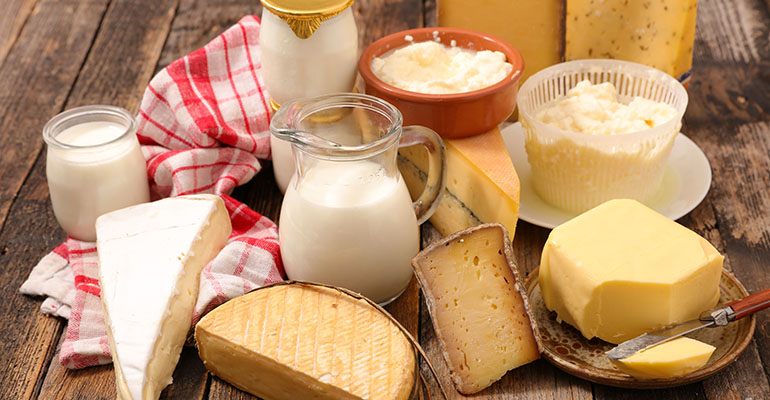Worldwide, dairy products are consumed by over 6 billion people, one billion of whom rely on the milk and dairy sector to support their livelihoods.
As part of Fi Global Connect: Regions in the Spotlight, Carole Bingley, Senior Associate Principal Scientist at Reading Scientific Services Ltd. RSSL provided insight into the current dairy market, highlighting key trends and innovations in this sector.
RSSL is a contract research organisation based in the UK, providing analytical training and product development services to the F&B industry. They offer R&D support to ingredient suppliers in terms of sourcing, applying, and brining ingredients to market.
A growing market
Although the past decade has seen growth in the global dairy market, it is not without its challenges. As Bingley noted, tight margins, a reliance on subsidies in emerging markets and a growing demand for dairy alternatives are key obstacles facing the sector.
Yet despite the global pandemic,
“global sales of cheese and butter increased considerably during lockdown,” Bingley said.
This may have been linked to the rise of home baking and food consumption in the home setting during periods of lockdown.
Similarly, since the pandemic began one quarter of consumers claim to have increased their plant-based product consumption. A GFI study showed that 41% of US households currently purchase plant-based milk alternatives, suggesting that amongst consumers there is generally a high willingness to try alternative products.
“The dairy alternative market is projected to grow from $21.4 billion in 2020 to $36.7 billion by 2050,” Bingley said.
Barrier-breaking innovations
Innovation in the dairy sector is growing, with a wider and more expansive range of products appearing on our shelves every day. Many of these new products aim to reduce the barriers associated with traditional dairy consumption such as negative health perceptions, environmental and animal welfare concerns.
As Bingley noted,
“in the past year, 10% of the dairy drinks launched in Europe carried immunity related claims.”
This trend can also be seen regarding low-fat dairy products such as alternative cheeses and allergen aware products like lactose free milk and butter.
Additionally, when it comes to introducing successful dairy alternative products to market, high protein content is very important, Bingley told Fi Global.
The alternative milk market has expanded greatly of recent in both popularity and consumer choice, with oat, almond and coconut as the preferred ingredients. Brands such as Alpro, Oatly and Mighty Pea have become household names for many worldwide.
“Pea protein started off at a very low rate but is increasing [in popularity] as it improves in taste quality … the ability to solubilise and suspend pea protein in these systems has helped to drive growth,” Bingley said.
Alternatively, despite being the first milk alternative ingredient to gain popularity in the market, the use of soya is decreasingly low in new product launches. This may be due to changing consumer perception associated with issues of deforestation and unsustainable production practises.
As Bingley noted,
“over the past 10 years, the growth of dairy based products has largely been flat.”
This has been counteracted by the larger increase in sales of milk alternatives, however in the coming years there is evidence to suggest that we may start to see a levelling off, as consumers see dairy products such as ice cream as occasional indulgences and hence are less prepared to compromise on the taste and texture of traditional dairy.
Looking to the future
Precision fermentation refers to the production of proteins identical to those found in animal derived products but produced through fermentation of animal cells.
“[this process] has the potential to disrupt the dominance of dairy,” said Bingley.
In the US, producers such as Perfect Day are tapping into this trend, using whey protein produced via precision fermentation as key ingredients in ice cream products, including Nick’s and Brave Robot.
With growing investment in this market, the funding opportunities for start-ups are vast and the focus for many is currently on developing dairy-free cheese products. It is likely that these products will first come to market in the US; as Bingley noted
“[companies] in Europe will be subjected to novel food legislations so will take a few years to come to market.”
Although traditional dairy continues to dominate the market, current dairy innovation focusses on accentuating the benefits of dairy such as its high protein concentration and removing barriers associated with traditional products. Dairy alternative products like cheese which have conventionally been hard to replicate in terms of taste and texture are areas of opportunity, which could be revolutionised by precision fermentation and like processes.
“The key challenge is to deliver on taste and nutrition, protein concentration and micro-nutrients such as calcium and idonide,” Bingley concluded.
For more insights into the dairy and dairy alternative market, watch the on-demand webinar for free here.



